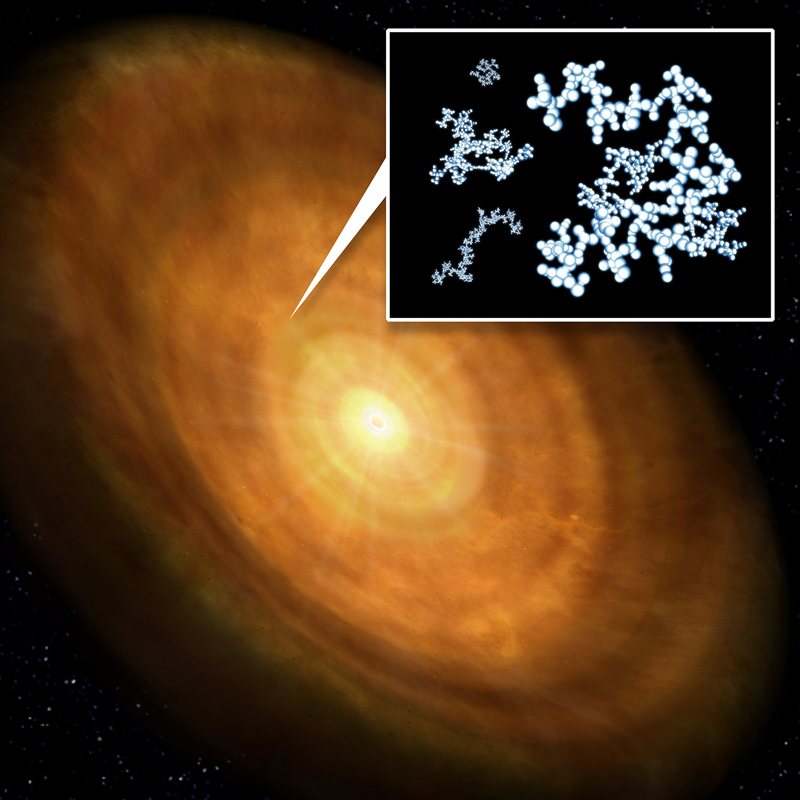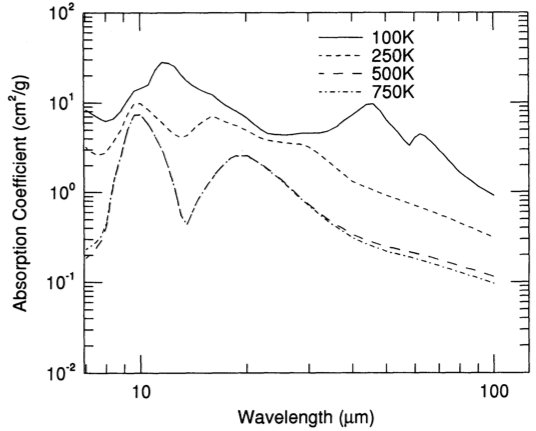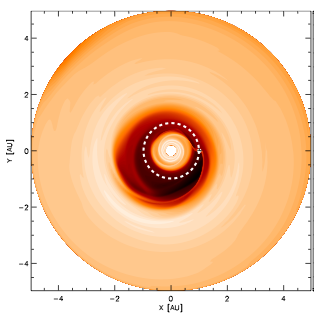Masters Projects
General:
| If you are interested in exoplanets, planet formation, protoplanetary disks, cosmic dust or radiative transfer, and you would like to do a Bachelor or Masters thesis project at ITA, just send me an email. Below you find topics for which I am urgently looking for candidates, but I am also open for your own ideas and topics! So if you cannot find your dream topic below, but your dream topic is in the above mentioned areas, then simply contact me and we can find out if we can find common ground. |
Topics:
Can fluffy dust aggregates be accumulated?
Betreuer: C.P. Dullemond und A. Kataoka
|
Planets are formed by coagulation of tiny dust grains. In protoplanetary disks, where is the birth place of planets, the intermediate size grains between micron-sized dust grains and thousands of kilometer sized planets. It may millemeter-sized grains be accumulated by pressure bumps of the gas disk (e.g., Pinilla et al. A&A, 538, A114, 2012). However, recent studies have shown that the intermediate-sized bodies should be extremely fluffy (e.g., Kataoka et al. A&A, 557, L4, 2013). If so, can they be accumulated at pressure bumps? Can they explain the observations? Make a connection between structure of aggregated dust particles and astronomical observations. |  Image Credit: SOKENDAI/NAOJ |
Is the protoplanetary material around young stars the same as in our solar system?
Supervisor: C.P. Dullemond and Th. Henning
| Many young stars still have their birth-disks around them. They are called protoplanetary disks. The dust in these disks is the raw material for future planets. To date many infrared spectra of such disks were taken with the Spitzer Space Telescope. In these spectra the signatures of various materials can be discerned: silicates, graphite, ices etc. The question is, is this composition the same as the material in our solar system? This project tries to find this out by comparing observed spectra to laboratory-measured opacities and the calculated compositions of the dust (see figure). |  |
Transition Disks: Strange tilted inner disks casting shadows
Betreuer: C.P. Dullemond
| Transition disks (TDs) are protoplanetary disks that are currently puzzling astronomers with their often bizarre shapes and dynamics. The latest images with the VLT-SPHERE instrument (see this gallery) and with the ALMA array (here one example among many) reveal never-before-seen detail. Many of these shapes are not yet understood. A particular spectacular feature of some of these disks is the ring + shadows. Marino et al. 2015 showed that this is likely due to an inclined inner disk. This project is to explore this further. |  |
Type I planet migration: Case with many planets
Supervisor: C.P. Dullemond
| When planets form out of a protoplanetary disk and steadily grow, there comes a time when, through gravitational interaction with the disk, they start migrating: they spiral either inward toward the star or outward. According to the latest investigations (Paardekooper, Baruteau, Crida & Kley 2010 und Lyra, Paardekooper & Mac Low 2010) planets often migrate toward a special point in the disk, which one could call a "planet trap". The goal of this project is to find out what happens if many planets converge into the same planet trap. Will they collide with each other and form a big planet? |  |

 Home page
Home page